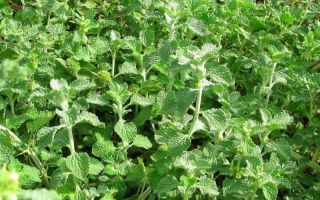Content
- 1 What it looks like, where it grows and the types of shandra
- 2 Chemical composition
- 3 The healing properties of the common shandra, fragrant, early and comb
- 4 Preparation and application methods
- 5 Application in traditional medicine
- 6 Application in cosmetology
- 7 Contraindications to the use of Shandra vulgaris
- 8 Collection and procurement
- 9 Conclusion
The healing properties of Shandra vulgaris are of great interest to traditional medicine. The plant is beneficial for many diseases and is used in the field of cosmetology.
What it looks like, where it grows and the types of shandra
Common shandra (Marrubium vulgare) is a perennial herb from the Lamiaceae family up to 60 cm tall. It has a hollow pubescent stem and ovoid wrinkled leaves, bright green at the top and lighter at the bottom. In early summer and until August, shandra brings spherical whorled inflorescences of a white hue, located along the entire length of the shoot. At the end of the decorative period, fruits appear in place of the buds - yellow-brown shiny nuts.

The common shandra grows widely in Central Asia, Russia and Ukraine, as well as in the western regions of China, Europe and Africa. It usually settles on calcareous slopes and along roadsides, in wastelands and near swamps.
It is customary to distinguish several varieties of shandra:
- Fragrant... Perennial plant up to 60 cm tall is distinguished by slightly elongated pubescent leaves. It blooms with white and purple whorls.
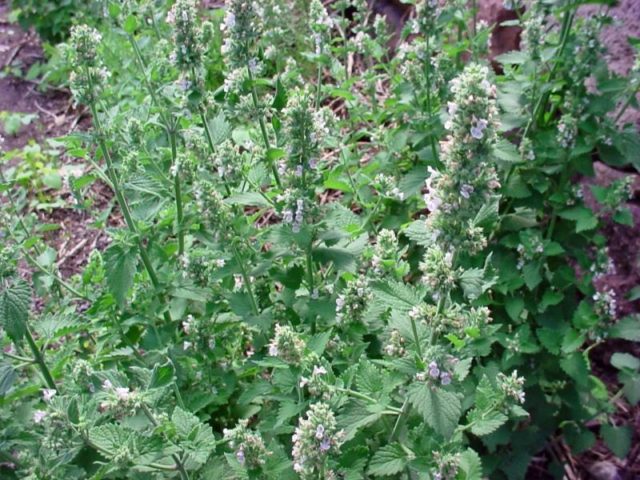 When rubbed, fragrant chandra emits a pleasant aroma
When rubbed, fragrant chandra emits a pleasant aroma - Comb... It has a tetrahedral stem with pubescence and bare leaves with serrated edges. Brings lilac or reddish purple flowers.
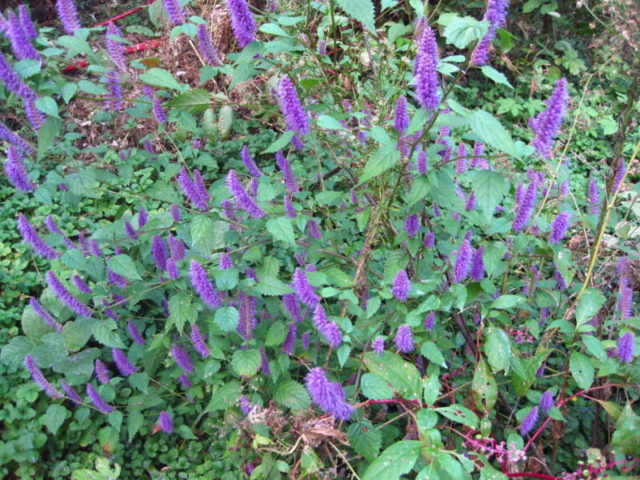 Crested shandra is a honey plant
Crested shandra is a honey plant - Foreign... It rises to 80 cm, the leaves of the variety are oblong-diamond-shaped, with a solid edge. The flowers are of a normal white shade, with a pleasant smell.
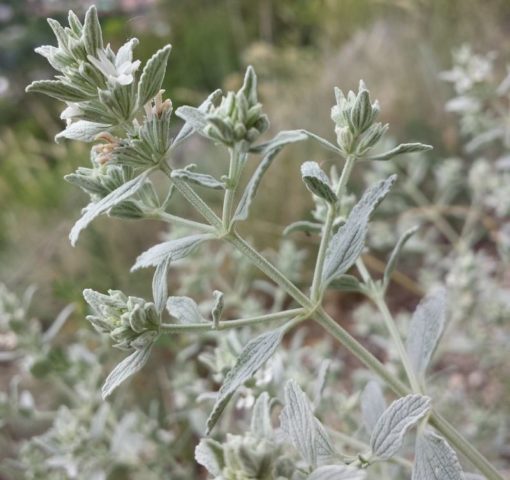 Alien Shandra is most widespread in southern Europe and Turkey.
Alien Shandra is most widespread in southern Europe and Turkey.
All plant varieties have medicinal properties.
Description of shandra early
If the common shandra on the territory of Russia is found mainly in the southern regions, then in the middle lane the early variety is widespread. It is distinguished by the structure of the flower - the calyx consists not of ten, but of five teeth.
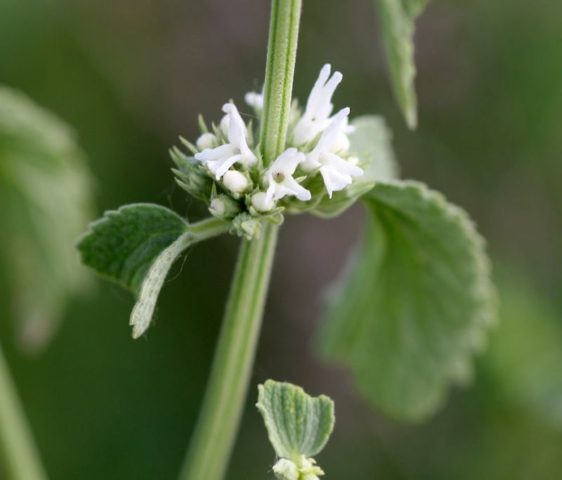
Chemical composition
The chemical composition of Shandra comb, common and early includes a large number of useful substances. Among them are:
- tannins and resins;
- saponins;
- limonene and fenhen;
- coumarins and alkaloids;
- ascorbic acid;
- azulene;
- fixed oils;
- diterpinoids;
- phenol carboxylic acids;
- flavonoids;
- mineral salts;
- caffeic and rosmarinic acids;
- alpha pinene;
- nitrogenous substances.
For medicinal purposes, ordinary shandra is used in limited quantities. At moderate dosages, the plant provides significant benefits.
The healing properties of the common shandra, fragrant, early and comb
Photos and medicinal properties of common shandra are of interest to traditional medicine due to its anti-inflammatory, diuretic and analgesic qualities. Plant based remedies:
- relieve colds and lower the temperature;
- normalize the monthly cycle in women and regulate the volume of discharge;
- help with toothache and otitis media;
- promote expectoration when coughing and bronchitis;
- remove excess fluids from the body and help to cope with edema;
- cleanse the intestines from toxins and toxins;
- increase potency in men and prevent the development of prostatitis;
- improve heart function and prevent heart attacks;
- strengthen the vascular system and lower cholesterol levels;
- normalize blood pressure;
- are beneficial for constipation tendencies.
It is possible to use funds from ordinary shandra in case of inflammatory processes and weakened immunity. The plant has a beneficial effect on health in case of vitamin deficiency and prevents the development of anemia.
Preparation and application methods
Useful decoctions, infusions and alcoholic tinctures are prepared from the stems and leaves of the common medicinal shandra. The funds are used internally and externally for acute and chronic ailments.
Tincture
A strong tincture of shandra is beneficial for malfunctions of the reproductive system, urogenital inflammation and weakening of potency in men. A medicinal product is prepared according to this prescription:
- fresh stems, leaves and flowers of an ordinary shandra are crushed in an amount of 100 g;
- 400 ml of good vodka or moonshine is poured into a glass container;
- clog the vessel and put it in a cool dark place for two weeks;
- from time to time removed and shaken;
- after the expiration of the period, filter through cheesecloth.
The tincture is consumed twice a day, 20 ml, if necessary, diluted in a small amount of water. The treatment continues for a month, and then they take a break for three weeks.
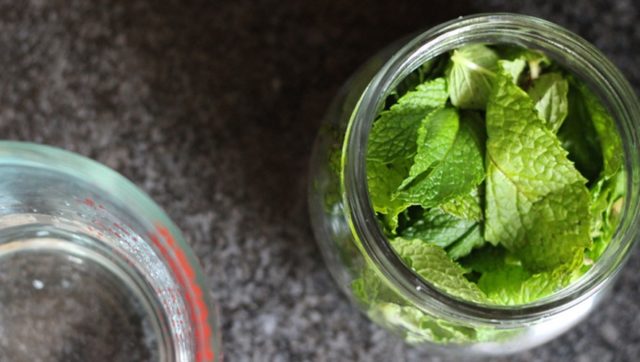
Infusion of Shandra
An aqueous infusion of common shandra works well for coughs. The agent has an expectorant effect, helps to remove phlegm and accelerates recovery.
The recipe for the infusion looks like this:
- the grass of an ordinary shandra is crushed in an amount of 20 g;
- mixed with 10 g of chopped black currant leaves;
- pour 250 ml of boiling water;
- leave for half an hour under the lid.
At the end of the period, the product is filtered through folded gauze. You need to take the medicine in the volume of a glass twice a day - in the morning and in the evening. The infusion can be drunk as a preventive measure to strengthen immunity during the period of seasonal viruses and colds.

Decoction
For heart diseases, a decoction of shandra is taken in combination with dandelion root. The tool increases the elasticity of blood vessels, prevents the development of dangerous conditions and protects against strokes and heart attacks.
The broth can be prepared according to this recipe:
- dry stems and leaves of chandra vulgaris are crushed in a volume of 15 g;
- mixed with the same amount of dandelion root;
- steamed collection of 300 ml of boiling water;
- in a water bath over low heat, boil the product for 15 minutes;
- removed from the stove and insisted for another half hour under the lid.
A filtered broth of ordinary shandra should be consumed during the day every few hours, 50 ml. You must drink the full volume of the prepared medicine per day. With the permission of the doctor, the herbal remedy can be combined with pharmaceutical preparations.
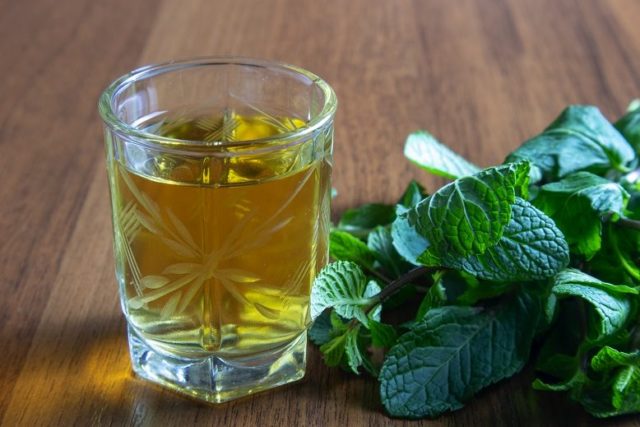
Application in traditional medicine
Medicinal chandra is used to normalize digestive processes, with respiratory ailments and metabolic disorders. Traditional medicine offers proven recipes with dosages.
With liver diseases
Common shandra helps cleanse the body, accelerates bile secretion and reduces the burden on the liver.With jaundice and cholecystitis, the following infusion can be used for therapeutic purposes:
- the leaves and flowers of the shandra plant are crushed in an amount of 10 g;
- pour raw materials with a glass of cold water;
- insist for four hours;
- passed through a gauze filter.
You need to take a remedy from ordinary shandra, 80 ml three times a day on an empty stomach. The infusion relieves inflammation and soothes pain, helps to improve digestion and prevents the development of anemia.
With asthma
The common shandra has a beneficial effect on the respiratory system, relieves cough and reduces the frequency of asthmatic attacks. For medicinal purposes, prepare the following infusion:
- two small spoons of dry raw materials of ordinary shandra are poured with 500 ml of clean cool water;
- kept closed for four hours;
- passed through cheesecloth to separate the sediment.
You need to drink the product four times a day, 50 ml. A little honey can be added to the infusion to improve the taste.
With anemia
With exhaustion, anemia, low hemoglobin levels and vitamin deficiencies, a simple infusion of ordinary chandra helps. Do it as follows:
- dry grass plants are crushed in a volume of 10 g;
- pour raw materials 200 ml of boiling water;
- kept for two hours in a thermos or in a saucepan under a lid;
- pass the product through cheesecloth.
The infusion must be taken up to four times a day in a large spoon.
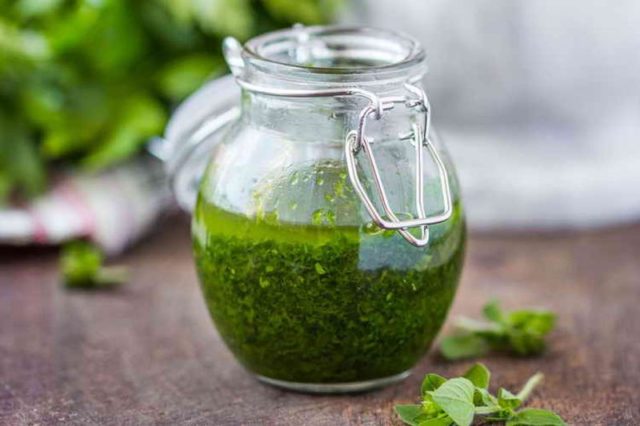
With gastrocardiac syndrome
Common shandra has a beneficial effect on digestion and relieves unpleasant manifestations of gastrocardial syndrome - heaviness in the stomach, nausea, pain and heartburn. The drug is prepared as follows:
- mix 30 g of ordinary shandra, thyme and centaury;
- measure 10 g of the collection and pour a glass of fresh boiling water;
- kept closed for only five minutes;
- filter the infusion through cheesecloth.
They use the agent 200 ml twice a day, each time a new portion of the medicine is prepared before use. It is not recommended to store the infusion in the refrigerator; in just a few hours, it can lose some of its beneficial properties.
Application in cosmetology
The beneficial properties of the shandra plant are in demand in home cosmetology. Perennial herb extracts are a part of protective day and night creams, wound healing agents. Shandra is present in balms for the restoration of skin damaged by excess ultraviolet radiation.
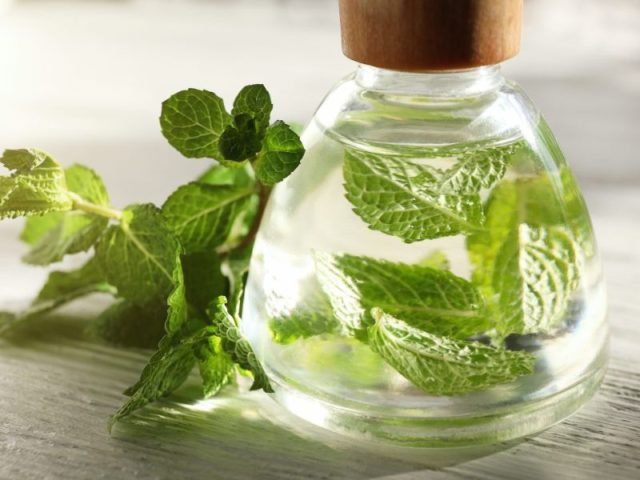
Organic acids and fatty oils in the plant nourish and moisturize the epidermis, maintain its softness and elasticity. Ordinary chandra can be added to homemade nourishing masks to rejuvenate and tighten the skin, to creams against stretch marks and anti-cellulite scrubs.
Contraindications to the use of Shandra vulgaris
The healing properties of shandra herb are closely related to contraindications. The leaves and flowers of the plant contain active substances in high concentration and can cause serious harm to the body. It is impossible to use decoctions and infusions based on perennials:
- during pregnancy and lactation;
- with exacerbation of pancreatitis and peptic ulcer;
- with hyperacid gastritis in the acute stage;
- in childhood and adolescence;
- in the presence of an individual allergy to the plant or its individual components.
When carrying out therapy with folk remedies, it is necessary to carefully observe the dosages of ordinary shandra indicated in the recipes. Excess of safe volumes can lead to the development of side effects, which include:
- nausea and severe vomiting;
- headaches;
- diarrhea;
- dizziness;
- stomach ache;
- flatulence;
- prostration;
- dyspnea.
If alarming symptoms appear, treatment with ordinary shandra should be stopped immediately.
Collection and procurement
Traditional medicine uses the aerial parts of the common shandra for medicinal purposes. Leaves, shoots and buds are harvested during the flowering period from June to late August. But it is best to harvest at the beginning of summer, when the grass is young and contains a maximum of nutrients. A clear and warm day is chosen for collection, an ordinary chandra is carefully cut off with sharp scissors or a knife, placed in a basket or immediately tied in bunches.

Upon returning home, the raw materials are washed from dust and dirt and laid out on a flat surface under a canopy. It is necessary to dry an ordinary shandra away from direct sun with good ventilation. If desired, you can use an electric dryer or oven - they are heated to no more than 45 ° C. To speed up the process, you can cut the stems and leaves into pieces.
Useful common chandra is stored in glass jars or paper and linen bags. Keep raw materials in a warm and dry place away from bright light. From time to time, it is recommended to take out the workpieces and stir them up so that they do not become moldy.
Conclusion
The healing properties of Shandra vulgaris are beneficial mainly for digestive and respiratory ailments. The herb has not so many contraindications, but small dosages are required, otherwise unpleasant side effects may develop.

